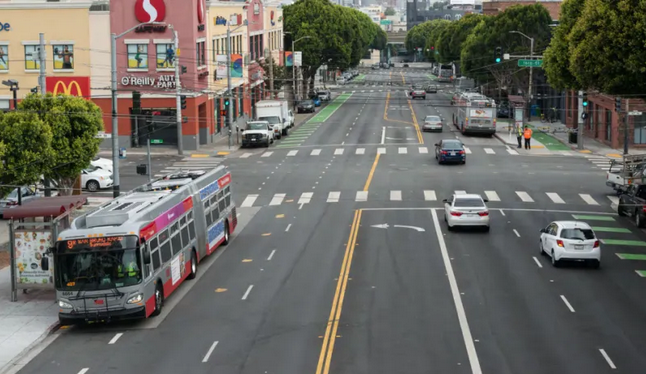Everyone is dependent on transit during this pandemic, whether they realize it or not, explained the authors of a new study on essential workers and their transit needs. That's because even people who are able to work from home depend on essential workers for medical care, food, power, emergency services, water, etc. Without transit, the essential workers who support those services would not be able to get to work and get the job done. "Work from home" would be impossible because society would cease to function.
That was just one of the motivations for Making Transit Work for Essential Workers, a study done by UC Berkeley’s Department of City and Regional Planning in conjunction with Seamless Bay Area. "While COVID-19 means working remotely for many people in the Bay area, tens of thousands of residents still use transit every week. Not only are these travelers having to face the very real risk of COVID every day, but they're also dependent on transit agencies that have strained budgets and massive service cuts," said Andrew Tate, a Berkeley grad student and one of the study authors, during a virtual conference about the study held Wednesday.
Their study expanded the definition of "essential workers" to anyone making "essential travel," even if it's not a front-line worker. They also spoke with cyclists, transit operators, and even drivers--anyone who has no choice but to commute despite the lockdowns. "It was helpful to document these experiences for comparison," said Tate.
The study authors consulted with transportation agencies and advocacy groups. After that, they interviewed 11 people to map their commutes. The idea is to identify problems that can only be found by listening and mapping the journeys of people who are actually traveling during the pandemic.
Amy Thomson, another of the study authors, brought the audience through some examples of the journeys. Of the three Muni bus operators they interviewed, two live outside of San Francisco and drive to work because the lack of integration and coordinated schedules makes it too expensive and complicated to use transit themselves. A third operator they interviewed lives in San Francisco, but opts to bike to the bus yard. Thomson explained that the bus operator who bikes appreciates slow streets. But cycling home at night is stressful.
They also conducted interviews in East Oakland with essential workers. They spoke to Evelyn who uses AC Transit to get to San Leandro, to her job as a care worker. She often has to wait for multiple buses, because buses are too full to practice physical distancing. She feels unsafe at night because of "ghost town" transit stations thanks to reduced ridership during the pandemic.
Another rider in East Oakland they spoke with had praise for the new Tempo bus line, because of the frequency and regularity. A rider in Palo Alto appreciated the relaxing journey she has on Caltrain. She also mentioned, however, that the stations suffer that same "ghost town" effect and don't feel safe.
So what are some of the biggest problems encountered by riders? Karl Reinhardt, another author, gave a few examples, but high among them is the perception that transit is unreliable. One concern for bus riders who bring their bikes is that there's no way to tell with online apps if the bus rack is full. And "...a lack of coordination between agencies was cited as a reason for greatly decreased transit reliability," said Reinhardt.
"A regional transit operator could better synchronize schedules," and therefore increase reliability and decrease wait time, he said, adding that it would make sense, going from the interviews, to offer a regional transit pass to low-income riders. "Removing penalties for transfers and fare capping could be beneficial."
While agencies offer discounts to lower-income workers, the incredibly complex and irrational fare structure between agencies has proven a barrier for riders to learn about and take advantage of them.
Finding solutions to these problems is a transit but also a racial justice issue, said Tate. "This burden is placed more heavily on Black and Latin-X travelers who are most likely to be riding transit during the pandemic." He said the researchers hope to expand the scope of the study to better guide policy. "The work we did here is just a first step in creating an equitable, racially just and resilient transportation system in the Bay Area."
To watch the presentation on the report, access the recording via Zoom.






